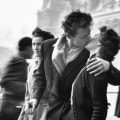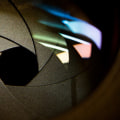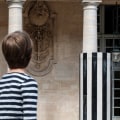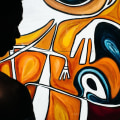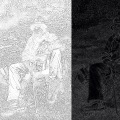Street portraits are a great way to capture the spirit of a place and its people. Capturing these moments in available light can be a challenge, but with the right technique and knowledge, stunning results can be achieved. In this article, we'll explore the basics of using available light for street portraits, from the gear and technique to the creative possibilities. We'll also look at how to make the most of available light in challenging lighting situations.
Whether you're a beginner or an experienced street portrait photographer, this article will provide you with the tools and techniques you need to take your street portraits to the next level.
Benefits and Drawbacks
Using available light for street portraits can offer a range of advantages and disadvantages. On the plus side, utilizing available light allows you to work quickly and enables you to capture a scene as it naturally exists in its environment. Additionally, natural lighting can provide a softer, more diffused light that can create a more dynamic portrait. On the other hand, using available light can present some challenges.Since you are working with existing light sources, you may not be able to control the intensity or direction of the light. Additionally, natural light can be unpredictable and can change dramatically over the course of a day, making it difficult to get consistent results. To make the most of available light for street portraits, it is important to be aware of your surroundings and the changing light conditions. You should also consider using reflectors and diffusers to help shape and manipulate the light to achieve the desired effect.
Camera Settings for Available Light
When shooting street portraits in available light, there are several key considerations that must be taken into account to get the perfect shot.Firstly, shutter speed is important for controlling the amount of light entering the camera, as well as freezing or blurring motion. Secondly, ISO settings can be adjusted to change the sensitivity of the camera's sensor to light. Finally, white balance settings can be adjusted to ensure accurate color reproduction in different lighting conditions. Shutter speed is an important factor when shooting in available light.
For stationary subjects, slower shutter speeds can be used to allow more light into the camera and create a more dramatic effect. When photographing moving subjects, faster shutter speeds will help to freeze the motion and prevent blurred images. ISO settings are also important when shooting in available light. Low ISO settings will produce a higher quality image with less noise, but may require more light than is available.
Higher ISO settings can be used to increase the camera's sensitivity to light, but may result in increased noise in the final image. By setting the appropriate white balance, colors in your image will remain true and not be affected by any color casts from the available light.
Lighting Techniques
Capturing street portraits is an art form that requires a combination of creativity, skill, and technical understanding. When it comes to lighting, there are various techniques you can use to achieve the desired effect. In this article, we'll cover some of the most common lighting techniques for street portraits.Natural LightUsing natural light is one of the simplest and most effective ways to capture street portraits. Natural light will provide a soft, even illumination that adds a touch of warmth and a gentle glow to your photos. The best time of day to take advantage of natural light is during the “golden hour”, which usually happens just before sunrise or just after sunset. During this time, the light is softer and more diffuse, which can help you create beautiful portraits.
Bounce Flash
Bounce flash is another lighting technique you can use for street portraits.This technique involves bouncing the light off of a wall or ceiling to create an even illumination. This can help soften harsh shadows and create a more flattering effect. It's important to note that bounce flash does not provide as much light as direct flash, so you may need to adjust your camera settings accordingly.
Off-Camera Flash
Off-camera flash is another popular lighting technique for street portraits. This technique involves using an external flash unit that is placed off-camera and aimed at the subject.This allows you to control the direction and intensity of the light, giving you more creative control over your photos. You can also use gels and other modifiers to adjust the color of the light and create unique effects. These are just a few of the lighting techniques you can use for street portraits. With some practice and experimentation, you can find the perfect combination of techniques to help you capture stunning photos.
Understanding Available Light
Using available light for street portraits is a popular technique among photographers. It involves capturing natural light from the environment to create stunning portraits.Available light can come from a variety of sources, including the sun, streetlights, and other ambient sources. Understanding available light and how to utilize it effectively is key to creating beautiful street portraits. The advantages of using available light for street portraits are many. It is often the most affordable option, as there is no need to purchase or rent additional lighting equipment. Additionally, available light can create an atmosphere of natural beauty and intimacy that is difficult to replicate with artificial lighting.
Finally, available light can create unique effects that are not possible with artificial lighting. When capturing street portraits with available light, it is important to consider the direction and intensity of the light source. In general, the best light for a street portrait comes from a single source at an angle to the subject's face. This will create flattering shadows and highlights that emphasize the features of the subject. Additionally, it is important to be aware of the intensity of the light source.
Too much light can be harsh and unflattering, while not enough light can result in dull or underexposed images. In addition to understanding the direction and intensity of the available light, it is also important to be aware of its color temperature. The color temperature of a light source can drastically affect the look and feel of an image, so it is important to be aware of this when shooting with available light. For example, a cool blue light can add atmosphere and drama to a portrait, while a warm orange light can create a cozy feeling. Finally, it is important to consider how you are using available light in your composition. The angle of the light source can affect how your subject appears in the frame, so it is important to consider this when composing your shot.
Additionally, it is important to consider how the available light will interact with other elements in the frame, such as background elements or other objects. Using available light for street portraits can be a great way to capture beautiful, unique photos. It is important to understand the basics of available light, as well as various lighting techniques, camera settings, and the benefits and drawbacks of using available light. With an understanding of the fundamentals, you can create stunning portraits with available light. When shooting street portraits in available light, it is important to consider the direction, quality, and intensity of the light as well as the background and surrounding elements.
Paying attention to these details can help you create captivating street portraits that capture the moment in all its beauty.


